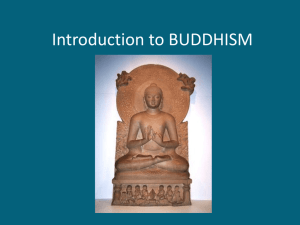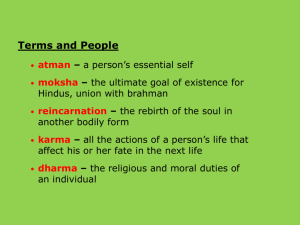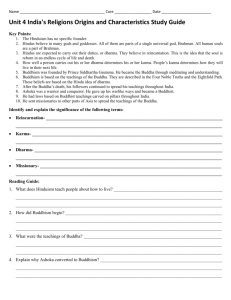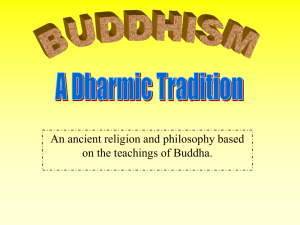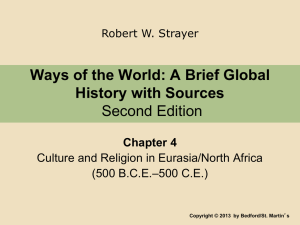Guided Notes for Buddhism
advertisement
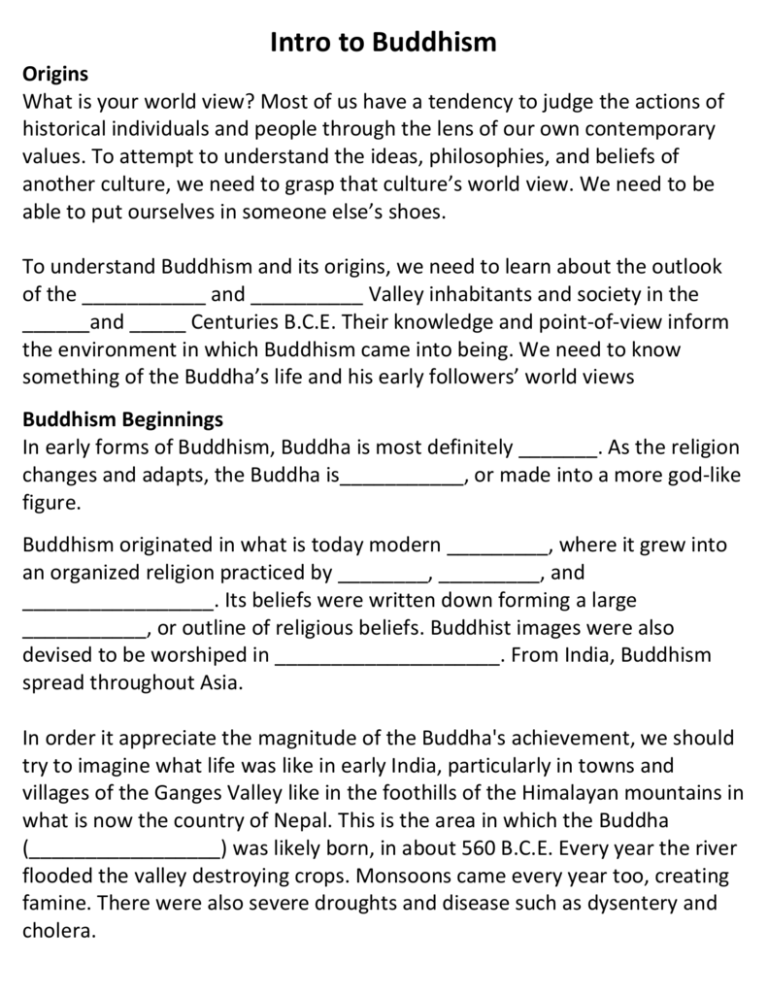
Intro to Buddhism Origins What is your world view? Most of us have a tendency to judge the actions of historical individuals and people through the lens of our own contemporary values. To attempt to understand the ideas, philosophies, and beliefs of another culture, we need to grasp that culture’s world view. We need to be able to put ourselves in someone else’s shoes. To understand Buddhism and its origins, we need to learn about the outlook of the ___________ and __________ Valley inhabitants and society in the ______and _____ Centuries B.C.E. Their knowledge and point-of-view inform the environment in which Buddhism came into being. We need to know something of the Buddha’s life and his early followers’ world views Buddhism Beginnings In early forms of Buddhism, Buddha is most definitely _______. As the religion changes and adapts, the Buddha is___________, or made into a more god-like figure. Buddhism originated in what is today modern _________, where it grew into an organized religion practiced by ________, _________, and _________________. Its beliefs were written down forming a large ___________, or outline of religious beliefs. Buddhist images were also devised to be worshiped in ____________________. From India, Buddhism spread throughout Asia. In order it appreciate the magnitude of the Buddha's achievement, we should try to imagine what life was like in early India, particularly in towns and villages of the Ganges Valley like in the foothills of the Himalayan mountains in what is now the country of Nepal. This is the area in which the Buddha (_________________) was likely born, in about 560 B.C.E. Every year the river flooded the valley destroying crops. Monsoons came every year too, creating famine. There were also severe droughts and disease such as dysentery and cholera. The ____________ (the Hindu priests) chanted the Vedic hymns and offered fire sacrifices to Brahma. However, they did not improve conditions for the common man. From the earliest times, Hindu society was __________. Castes were firmly established in the economy with the Brahmanas the creators and ____________ of a social order highly favorable to themselves. The Middle Way One of the Buddha's greatest spiritual accomplishments was the doctrine of the ___________________. He discovered the doctrine of the Middle Way only after he renounced the extreme practices of the forest dwellers. The Buddha lived among the forest dwellers as an __________ for some time. This experience convinced him that one should _________________. One should avoid the pursuit of worldly desires on the one hand and severe, ascetic discipline on the other. Despite his doubts about existing religious practices, and his strong sense of mission, he did not think of himself as the creator of a new religion. Rather, he felt the need to purify the religion of his day. Samsara and Time Samsara (a Sanskrit word) literally means a "round" or a "cycle." In the ancient Indian worldview this means the endless cycle of rebirth and death—there is no beginning and no end. This endless cycle is governed by karma (causality). How do people (beings) move about in this world? The answer is karma. Karma means __________ or ____________. Every action has a result. Karma is a built-in universe scale for good and evil—good leads to good result and visa versa. Karma transgresses from one life to another. It determines how a being will be reborn (higher or lower). Your current circumstances are determined by deed in your previous life, but between the present and the future there is free will. _______________________ is possible. How does one achieve salvation? All is cyclical. All is painful. Even Gods suffer. The goal is ____________. Nirvana is extinction. Where is Nirvana? Nowhere. Nirvana is outside the vertical concept of the universe.


